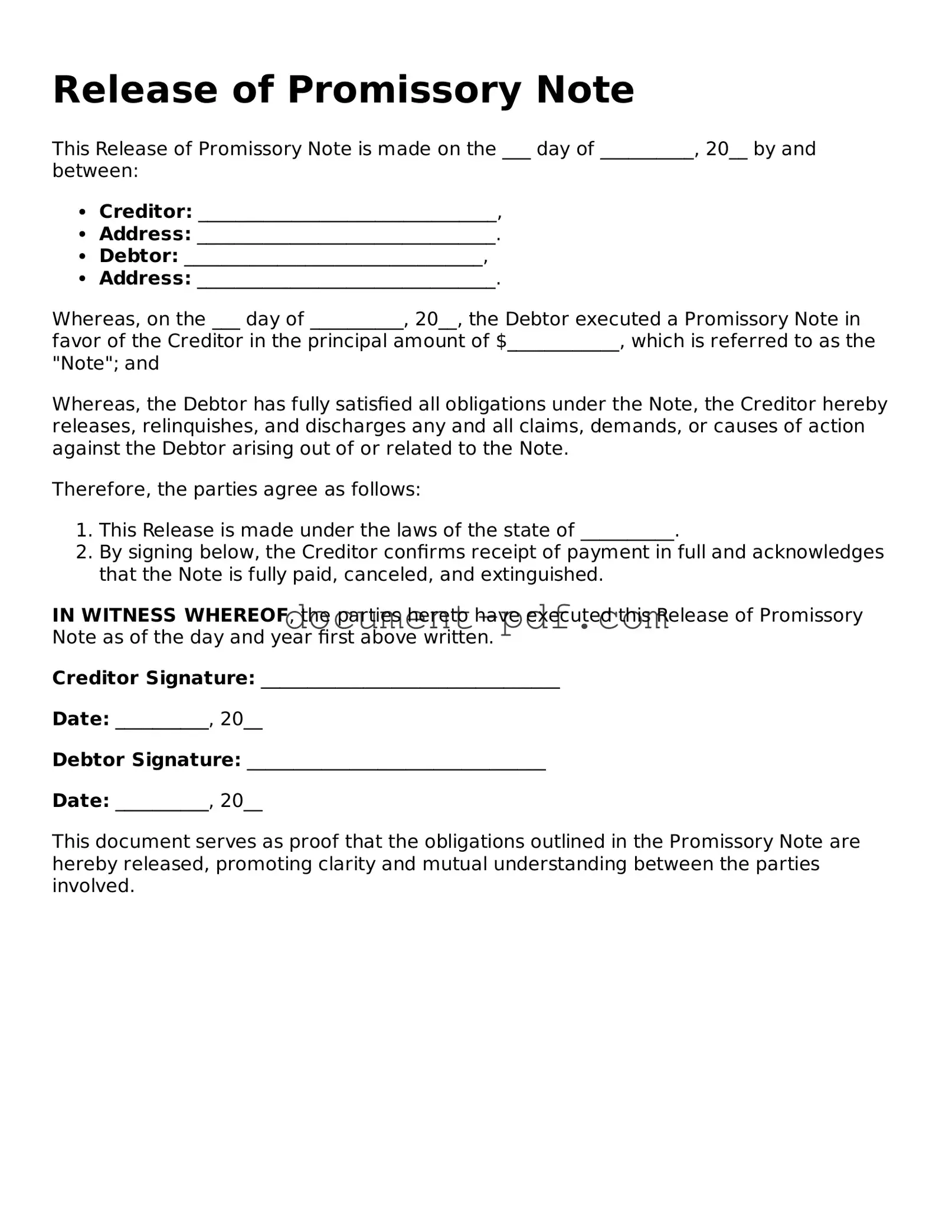Release of Promissory Note
This Release of Promissory Note is made on the ___ day of __________, 20__ by and between:
- Creditor: ________________________________,
- Address: ________________________________.
- Debtor: ________________________________,
- Address: ________________________________.
Whereas, on the ___ day of __________, 20__, the Debtor executed a Promissory Note in favor of the Creditor in the principal amount of $____________, which is referred to as the "Note"; and
Whereas, the Debtor has fully satisfied all obligations under the Note, the Creditor hereby releases, relinquishes, and discharges any and all claims, demands, or causes of action against the Debtor arising out of or related to the Note.
Therefore, the parties agree as follows:
- This Release is made under the laws of the state of __________.
- By signing below, the Creditor confirms receipt of payment in full and acknowledges that the Note is fully paid, canceled, and extinguished.
IN WITNESS WHEREOF, the parties hereto have executed this Release of Promissory Note as of the day and year first above written.
Creditor Signature: ________________________________
Date: __________, 20__
Debtor Signature: ________________________________
Date: __________, 20__
This document serves as proof that the obligations outlined in the Promissory Note are hereby released, promoting clarity and mutual understanding between the parties involved.
